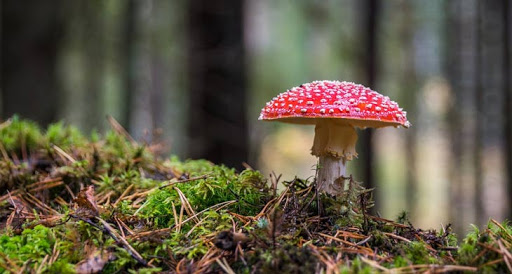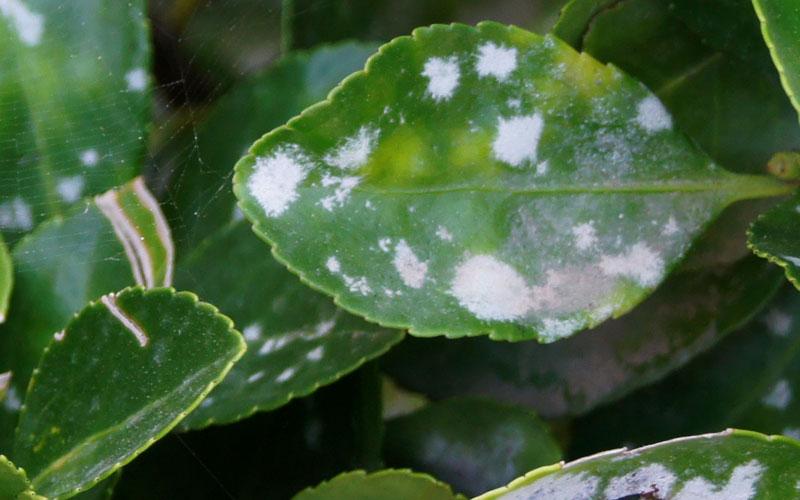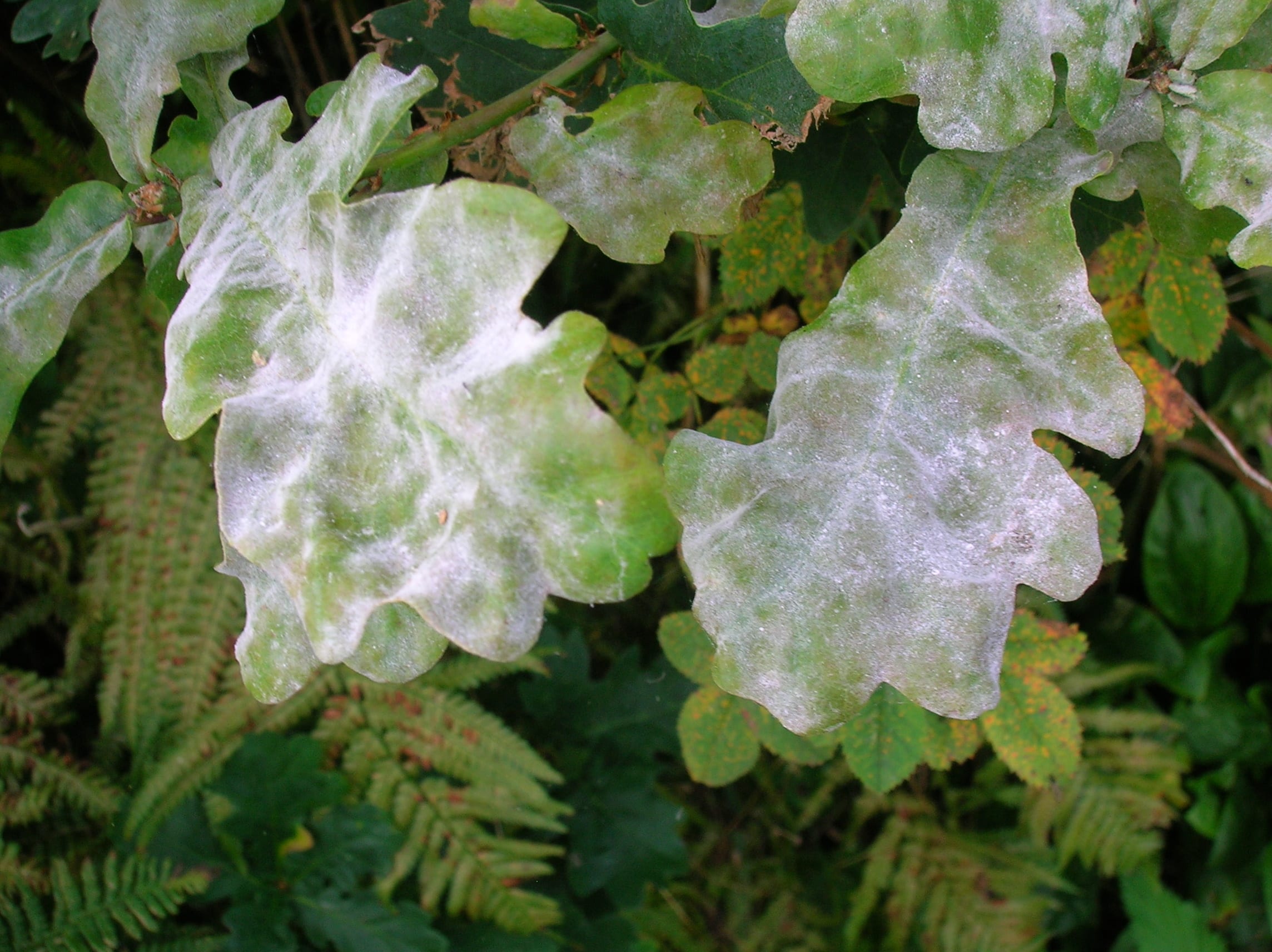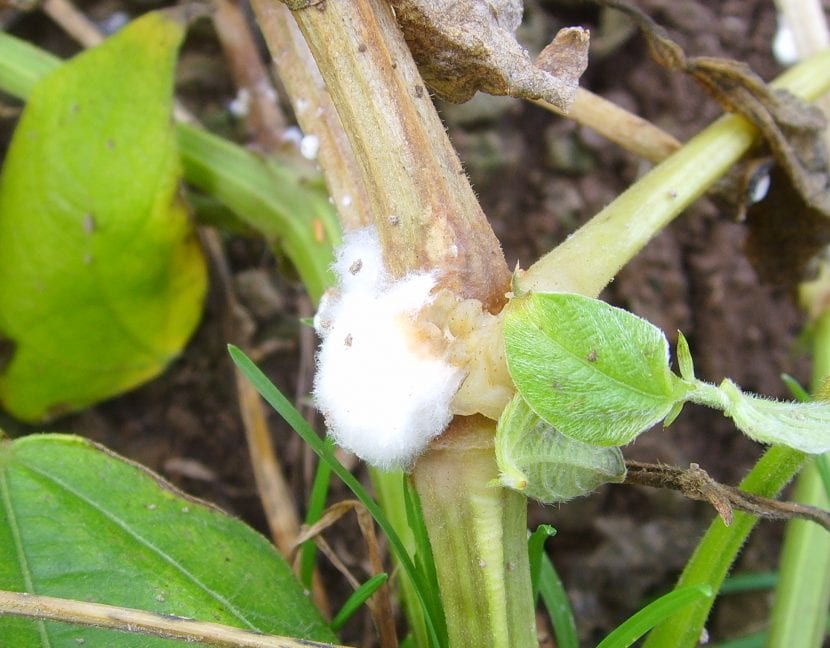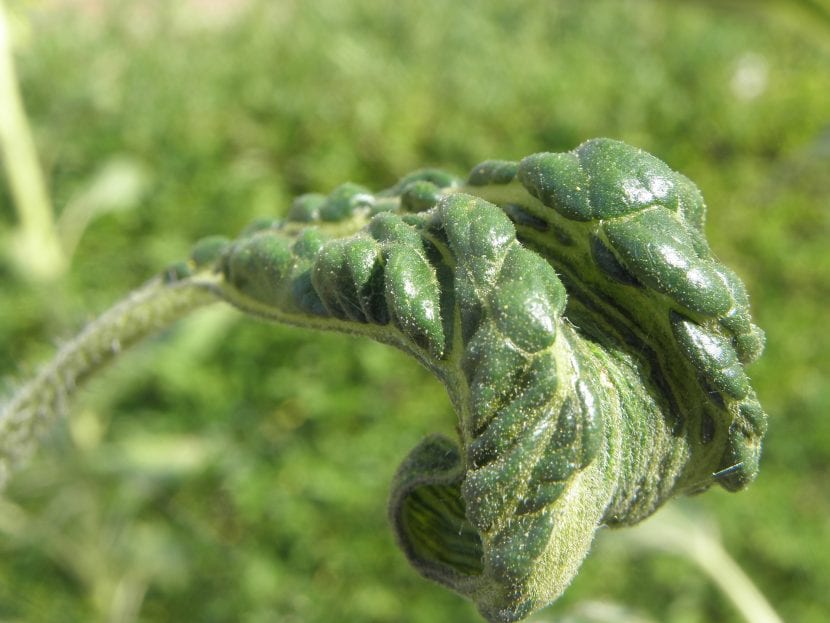The plant world is quite extensive and highlighted by humanity, where various studies have been carried out to know the conditions that affect it and those that come to favor it, in this case fungi stand out, for man it represents a source of great medicinal properties , let's learn a little more about the Types of Fungi on Plants.
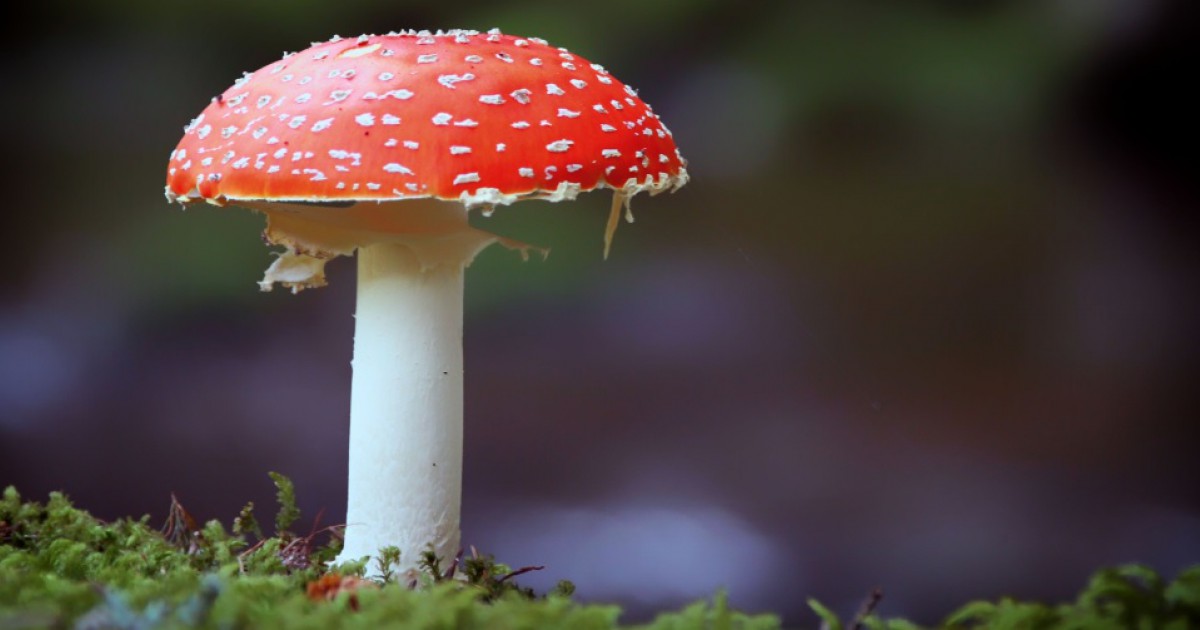
mushrooms
The word fungi comes from the Latin fungis, it corresponds to eukaryotic organisms (Organisms that are composed of cells and nuclei) that belong to the fungi kingdom, one of its main characteristics is that they are found in molds, yeasts and any organism of the mushrooms Forming a group that does not have an ancestor among the members, they are often considered parasites that come to live in decomposing organic matter.
They can be classified as a kingdom completely different from plants, animals and protists, being distinguished from plants they are heterotrophic species (organic matter transformed into nutrients and energy) and animals have cell walls composed of chitin that also It has cellulose.
In ancient times it was considered that fungi were related to plants, previously plant species were considered as fungi, with the passage of time it was identified that in reality all the organisms that are considered as fungi come from those ancestors that are capable of transforming the chitin cell wall.
Fungi have a diet known as osmotrophy, where all their nutrients are absorbed from the substances that are dissolved; its digestion is external and it manages to secrete all the enzymes. This is due to its ability to break down all dead matter from animals and plants. Due to this peculiar characteristic, fungi have a biogeochemical role of importance for humanity.
Fungi can be considered a kind of parasite that tend to adhere mainly to plants, affecting their growth and development, since they can adapt to any type of habitat and are very common in most green areas. Fungi are often useful to the point of infecting even plants and animals, causing a serious internal imbalance and making them sick.
Types of Mushrooms
Fungi can be present in any of the gardens, this is due to their characteristics where they are capable of having various phases while they are presented with the opportunity or the most favorable conditions to attack the plants. Normally, most fungi tend to affect plants, since they are microscopic beings that are not always very visible to the human eye.
Approximately 100.000 species of fungi can be identified, where it can be considered that 50% can produce different types of diseases for humans, some of these species can affect animals, but approximately 15.000 species of fungi can create damage to plants.
All the plants that are found in the gardens of homes or urban sectors can be attacked by fungi, emphasizing that fungi can be considered as parasites that can affect plants, in this case it is necessary to keep in mind the different types of fungi to combat them effectively:
Leaf fungi on plants
Foliar fungi in plants correspond mainly to those that are responsible for attacking the leaves, even affecting the stem, the buds of some, the youngest branches and even flowers. They are a type of fungus that affects a wide variety of ornamental plants in gardens, especially those that are found in high humidity, low aeration and subjected to constant irrigation until they generate strong stress in the plant, let's learn more about the foliar fungi common:
Powdery mildew
It corresponds to a type of fungus that is very common in gardens, especially if it presents conditions of high humidity, low aeration and little shade. It normally appears at the beginning of spring, its action being stronger in the summer and autumn seasons. Its main symptoms are due to circular and whitish spots, as the spots progress, they tend to cover the largest areas of the plant.
The areas attacked by the ear fungus are usually the stems, the branches and even the rapidly spreading fruits. The dust from this fungus usually causes various types of deformations, mainly very visualized in the leaves and buds, which can prevent flowering in the plant, in addition, the fruits are usually infected and thus crack to prevent their normal growth.
Roya
Rust corresponds to a disease caused by a fungus, curing this disease is usually very difficult and tends to appear during humid times and usually generate certain favorable conditions, mainly in spring and autumn, which are usually very humid. They are usually very prominent for having an orange color at the beginning of the year, while in the rest of the year they are usually brown.
Rust can come in different species, varying in color such as black known as Puccinia, brown called Uromyces, yellow known as Gimnosporangium sabinae and orange called Phragmidium, the latter being very peculiar for attacking rose bushes. They are usually very easy to detect because they present a series of orange lumps that are located on the underside of the leaves in the back section, while some yellow spots usually appear on the upper side.
The leaves that are affected usually fall and the plant ends up weakening. Its branches and new shoots can be born with some red spots from the fungus. One of the main methods to combat them is through the treatments carried out for foliar fungi (Oidium and Mildew), in addition, there are specific products on the market for the treatment against Rust.
Mildew
Mildiu corresponds to a fungal disease that usually attacks strongly during the summer season, although it can also be observed during spring due to increased humidity and the presence of high temperatures. It can attack most plants but preferably those that are much younger, mainly those that usually grow in humid habitats.
At the beginning, light green spots usually appear, mainly on the upper part of the leaves, while in the lower section they usually develop a grayish-white fuzz considered fungal and sometimes purple. Normally the leaves can turn yellowish and then take on a brown hue, it can be confused with powdery mildew due to its very similar symptoms, it is advisable to pay attention to its physical characteristics.
Sooty mold or Negrilla
Sooty mold corresponds to a non-parasitic fungus, it is normally observed as the presence of a dry black powder located in the upper part of the leaves, stems and also the fruits. Its damage is usually more aesthetic, but in the same way it usually limits the entry of light and also of air for the leaves, affecting the general vigor of the plants, to the point of weakening them. This type of fungus usually settles on molasses, it corresponds to a sugary substance that can be excreted by aphids, mealybugs and even whiteflies.
Botrytis
Botrytis cinerea corresponds to a fungus that parasitizes flowers, fruits, leaves and tender stems, then depositing its parasites kills them. This type of fungus can become capable of living on any type of plant, even if it is alive or dead, therefore, its spores are usually found in the air. It can generate soft rot or also known as gray rot, it is normally visualized first as a wilting of all the affected organs, then they appear limp, yellowish or pale green; generating necrotic vessels in the section of the bases of the leaves and stems.
Its growth is usually favored in favorable humidity conditions, you can get to observe the different fructifications that fungi have, mainly in the form of tiny trees that have a grayish color and a powdery appearance. The attack is usually on the stems, increasing progressively until the plant is killed, its attacks are usually mild, leading to the partial death of the affected plant.
It is necessary to control it in this way, it is usually prevented from attacks that become aggressive and cause rapid propagation, being favored by excessive humidity in the environment, it is necessary to eliminate dead parts and those that were affected in the plant, that is, It is recommended to only leave healthy tissue.
Anthracnose
It corresponds to several fungi that can cause anthracnose and all its symptoms can be different depending on the type of plant and that can generate a type of fungus. Its symptoms are usually the appearance of some brown spots that are located mainly in the section of the leaves and around the nerves of the plant. When affected by the disease, its leaves tend to dry up and produce primordial defoliation in spring and summer.
It can seriously affect the stems, the buds and also the fruits, causing them to completely dry out and in the most extreme cases it can cause the death of the entire plant.
banana anthracnose
Apiognomonia veneta corresponds to a fungus that can appear on Banana trees (Platanus) regardless of age as long as it has the appropriate temperature. The disease has three main phases; The first deals with the formation of cankers where it begins to affect the plant, then the death of the plant's shoots and finally the death of the leaves. It can attack the leaves, it can also affect the shoots and young branches, at the time the cankers are produced, their ulcerous lesions tend to deepen and spread.
The disease can be spread very easily, even if healthy trees are pruned with those tools used on infected trees. All trees can be affected, they usually weaken to the point of losing young leaves and even young shoots die, those that manage to resist the attack are usually very sensitive to other agents, such as Oidium and Oidium. Banana tiger.
In spring times they usually appear on those leaves with brown spots in the area of the ribs, they tend to curve and dry, in summer they usually fall. In the case of the branches and some buds, in spring times some insertion points are usually perceived in the leaves, cankers until they cause the death of the young branches. In the winter season they are usually small with black spots on the bark of dead branches in the previous year. Even reaching to produce malformations in the cup.
Platanus orientalis corresponds to a variety of plant with great resistance to the disease, and Platanus hispanica may be the most sensitive species. Its treatment cannot be carried out by the typical chemical spray products, in this case it is recommended to apply the different endotherapy treatments, it consists of an alternative method for the phytosanitary treatment of trees, being an injection in the trunk of a substance nourishing
chestnut anthracnose
Chestnut anthracnose is usually known as Mycosphaerella maculiformis and corresponds to a foliar fungus that can affect species such as Oaks and Chestnuts. In the spring and summer seasons, it is usually seen on the leaves, being located on the underside or also on the upper side, brown spots appear with a yellow border that tends to spread over the leaf in the form of a mosaic. Their attacks are usually strong until they fall off the leaves and fruits. Similarly, they can be treated by endotherapy with a nutritive substance.
Vascular fungi
All vascular fungi can colonize through the circulatory vessels of all the plants that they invade until they cause wilting and the death of the plant, or sometimes only a part of it. To get to know if these are the ones that affected the plant, it is mandatory to carry out a laboratory analysis, because they tend to act in association with other agents, so their diagnosis can become very complicated, being combated by endotherapy, let us know some of the most peculiar vascular fungi:
verticillium wilt
Verticilosis corresponds to a vascular fungus (Verticillium) that usually attacks a wide variety of plant species, causing discoloration of the leaves and rolling, even killing the plants. It can infect plants and even trees, spreading to affect the roots. All trees can be affected to the point of generating very little foliage and even dead branches. Buds can be affected until they fail to open in the spring season.
All trees that are infected may not show symptoms for years until they show up again on the plant. Trees can manage to survive for years while others die in the first attack. Its treatment is very complicated, therefore, its cure is usually very difficult, Endotherapy can be used for its treatment, the introduction of a nutritive substance for the plant.
Elm graphiosis
It is a disease caused by the vascular fungus Ceratocystis ulmi, responsible for attacking the species known as Ulmus minor, Ulmus glabra and Zelkova. It can be spread by an insect known as the elm borer. Its cure is quite complicated and can lead to the death of the tree. All groups of trees that can become infected can be transmitted by the roots.
Its main symptom is those yellow leaves that are located in the crown, with the presence of dry branches of a reddish-brown color with a group of curled leaves. Normally, when cutting the branches, rings with dark brown spots are usually seen. It is necessary that in order to combat them, an integrated fight is needed to develop an effective methodology, despite them, their cure can be very complicated.
Wood Fungi
Wood fungi are a large group of plant fungi that live off the lignin and cellulose of wood and are called xylophagous fungi or decay agents. All its wounds tend to get infected for various reasons, it can be natural either due to hail, frost, insects, among others, or also due to poorly done pruning, such as creating ditches, changes in ground level, among others. Wood mushrooms can be classified into three main styles, they are the following to highlight:
white rot
Most of the xylophagous fungi found in deciduous trees can cause white rot, this is due to the degradation of lignin long before cellulose, therefore the wood acquires a pale color.
brown rot
The fungi responsible for causing brown rot are found in a lower proportion than white rot, with the majority of coniferous species being the main ones attacked. This type of fungus usually attacks the cellulose and remains in the brown wood until it causes decomposition and the lignin is completely modified.
soft rot
The cause of the fungi to decompose is mainly the cellulose, leaving all the soft wood to create microscopic cavities. It is a type of fungus that is very difficult to distinguish because it is very similar to white rot.
How to identify if there is wood fungus attack?
Society is made up of a wide variety of raw materials that are used for the construction of various materials necessary in homes and in day-to-day life, in addition, very practical ornamental plants can be used for decoration and beauty of the environment.
Due to this, it is not exempt from being infected by some pathologies that can affect its condition, in this case, it stands out to suffer attacks from xylophagous agents that can lead to rot and the invasion of termites, this is due to being a material of organic origin that can be easily degraded, there are two types of xylophagous fungi: chromogenic (they feed on the cellular content of the wood) and rotting (they cause the loss of resistance of the wood).
There are several ways to identify if a wood has some type of fungus, this can be verified by observing the presence of mushrooms, open cavities, evidence of decay and activity or ant nests, in the case of the plant being exposed to medium conditions. environmental conditions, birds or mammals will be observed in said decomposed wood.
Wood fungus treatment
A set of methods can be applied to carry out the cure for fungi that usually attack wood. The type of fungus is usually identified and also the degree of infection that will support decisions for the treatment of wood, it is advisable to carry out constant monitoring of the plant to eliminate the fungus. In this case, the most advisable thing is prevention, mainly at the time of pruning as well as in the maintenance of the plants.
canker-producing fungi
Cankers on plants are considered as ulcers or open wounds present on the trunks and mainly on the branches. It is considered a disease caused by a fungus that is responsible for causing malformations and even lumps on the leaves. They are usually generated in limited areas such as dead zones of the trunk or in branches. Its symptoms are usually diseases caused by a wide variety of fungi, although they can also be caused by bacteria, very common in fruit trees. Let's know the most outstanding in this case:
Nectria galligena
It corresponds to a fungus that can be found in apple trees, pear trees, maples, beech trees, walnut trees, also in the species known as Prunus sp., Quercus sp. and Salix sp.
Cryphonectria parasitica
Considered as a chestnut canker (Castanea sativa) that can influence and damage the species known as Acer and Quercus.
Phytophthora
Its name comes from the Greek "Phytón" which means plant and "Phthorá" means destruction, its name is synonymous with the great damage they can do to plants. There is a wide variety of species of this type of fungus that can affect the aerial part and the roots of plants, standing out for its main activity is to attack the root neck and directly at the root. Normally, this type of fungus can live in the soil and use irrigation or rain water until it finds the different suitable conditions to attack the roots of the plant.
Seiridium cardinale
They usually affect cypresses (Cupressus), as well as Cupressocyparis x leylandii, Thuyas sp., Juniperus sp., Chamaecyparis sp. and Cryptomeria japonica. It can cause serious damage to hedges as well as to isolated specimens and can infect the plant through any type of small wound, even an insect bite on the plant.
The cypresses must be very careful, watered and even become fertilized, being exposed to presenting any type of natural wounds that cause the spread of the infection by this fungus. Where cypresses can grow on dry and poor soils they may have less vigor and therefore may be less exposed to the fungus. Environmental humidity is above 80% and can facilitate the development and growth of the parasitic fungus. Hedges that are continuously pruned can also become very susceptible.
Gum
It is considered as the exudation of rubber, being a viscous material that has an amber color, it is initially soft and can often harden when it comes into direct contact with the air, indicating that the plant may be undergoing some alteration outside of what is expected. normal, this can be seen caused by a loss of sap that tends to weaken the plant, all this can be attributed to the following conditions:
- Presence of some fungi, bacteria and even insects attached to the plant.
- Due to lack of water or scarcity of nutrients.
- Abundance of water.
- Wrong pruning.
- Poor grafts.
Citrus gummosis can be caused mainly by Phytophthora and usually appears at the base of the trunk, normally these trees can receive damage that appears in any area of the trunk. It is usually combated but it is always necessary to identify the agent that causes it.
Importance of Mushrooms
Fungi can rot wood and destroy essential plant species, despite this, man has been able to take advantage of some fungi to be used in the consumption of society and in various fields because they can provide proteins and vitamins such as mushrooms, chanterelles and mushrooms or also those well known as yeasts and even in some religious tendencies that can be used in rituals.
Some of the mushrooms can become hallucinogens widely used for medical purposes in psychotherapeutic sessions, it is widely used by some cultures such as the Asian one, they are widely used for the treatment of diseases, because they are considered as probiotic organisms that collaborate with the restoration of well-being and the balance of the organism, in this way it can reach the immune system treatise.
For this reason, they are widely used in the diets of some cultures and parts of the world, mainly in the consumption of pleurotus mushrooms, where their great nutritional value is indicated by their high content of non-starchy carbohydrates and dietary fiber, high content of chitin and their ability to to absorb fats in the digestive tract. Some research may even be able to prevent tumor formation or advanced growth within affected bodies.
It is considered that its form of action is to enhance the cells that can become cancerous and getting rid of them naturally without any side effect. It has also been confirmed that they can reduce the level of fatty acids in the bloodstream and cholesterol in the liver. Collaborating with the prevention of heart disease by avoiding hardening of the arteries.
mycoculture
The study of fungi has led to special cultivation to be developed for different purposes, whether for economic or scientific interest, they are normally developed for the consumption of fungi and also those that have properties such as antibiotics being developed for penicillin, also the yeasts for the production of food and some fermented alcoholic beverages.
Mushrooms can be cultivated as very common culinary fungi such as truffles and mushrooms, being developed in semi-darkness and also in environments that are very humid. Molds can also be studied and their ease of growth, at least at home, it is advisable not to have direct contact due to their possible reaction with skin contact.
The spores that are released from the fungi, when inhaled, can cause respiratory problems in the person. It is advisable to carry out studies together with a mycologist, in other words with a fungal specialist, because there are species that can become highly toxic and dangerous to human health, causing serious allergies or even death.
We hope this article has been helpful, we leave you others that will surely interest you:
